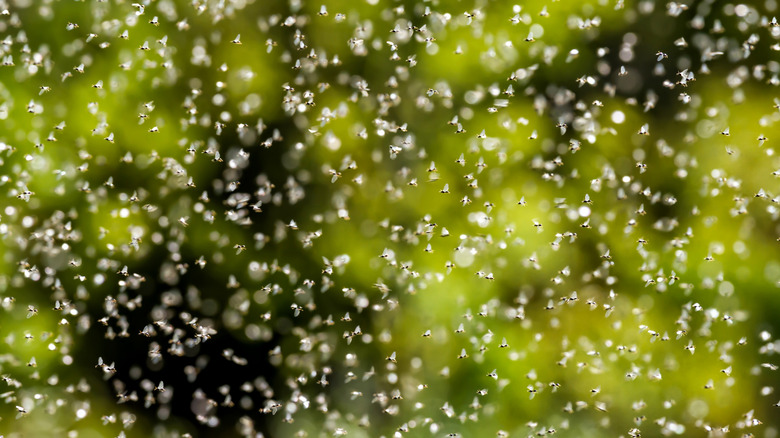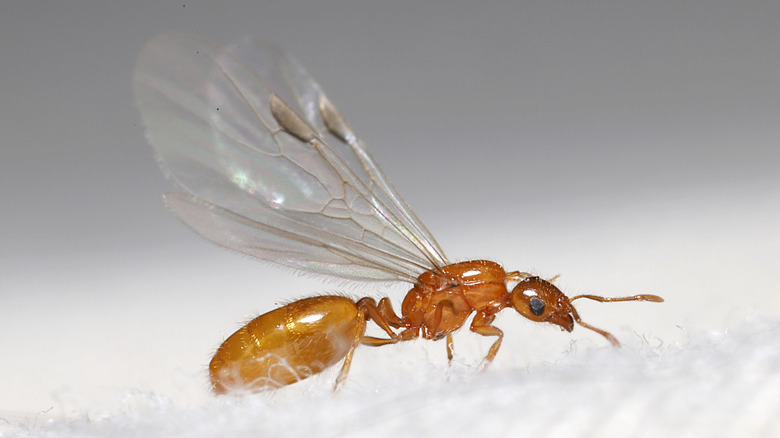Here's Why Some Ants Have Wings
We may receive a commission on purchases made from links.
There are about 10,000 species of ants in the world. Some of these species are considered pests to humans because of how they sneak into homes and businesses through tiny cracks in foundations and walls, causing damage as they build and expand their colonies. Usually when you see ants crawling around, they don't have wings. Other times, though, you may see ants with wings (one of the characteristics that bees and ants share). These flying ants are called swarmers, and they serve a very specific purpose.
Worker ants are the first offspring of a queen ant. While they search for food and expand the nest, the queen continues to lay eggs. Anywhere from one to six years later, a colony will be mature, and the swarmers that emerge are the kind of ants that have wings. These male and female ants only take flight in spring and early summer to reproduce. During this nuptial flight, the ants swarm together and mate in mid-air. While the male swarmers die about two weeks later, the females search for nesting sites where they can become queens and establish new colonies by laying eggs, the first of which are workers. Then, the cycle continues.
Why you see flying ants indoors and what to do
Although ant swarmers generally leave the colony and take flight between April and June for mating season, they still move around their nest colonies. If you see them in your house, it's likely that you have an ant infestation. Like other ants, swarmers are attracted to sources of food and water, such as crumbs and sugary liquids in kitchens, and moisture in bathrooms.
While there are clear differences between ants and termites — including the sizes and shapes of their bodies, antennae, and wings, as well as their color — they both swarm during mating season and can cause structural damage to buildings. The latter reason is why it's important to inspect your property for an ant infestation if you see flying ants inside. Look for any cracks around doors and windows and in walls so that you can seal them to prevent more ants from getting inside. Next, clean up any sources of food or water.
With everything clean, you can put out insect traps that the ants will be attracted to instead. These traps, like those made by Raid, feature insecticide that the ants will carry back to their colony. Once the insecticide has spread among them, they will eventually die out, hopefully leaving your home ant free.

